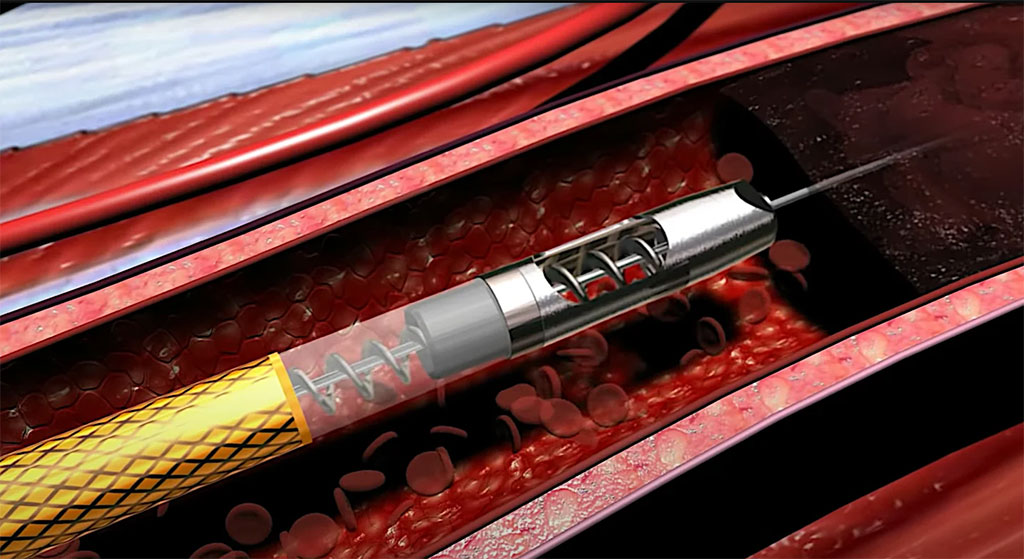Rotational Atherectomy System Treats In-Stent Restenosis
By HospiMedica International staff writers
Posted on 19 Oct 2021
A rotational excisional device removes and aspirates varying lesion morphologies, including within peripheral arteries fitted with stents, stent grafts, and native or artificial bypasses.Posted on 19 Oct 2021
The BD (Franklin Lakes, NJ, USA) Rotarex Atherectomy System is a precision device that negotiates even complex lesions without using external blades. Its core component is a rotating atraumatic catheter head with blunt facets that is connected to a rotating helix; both catheter head and helix rotate at approximately 40,000-60,000 rpm. Additional luminal gain is achieved by a vortex created around the rotating cylinder, side windows that remove detached material, and continuous negative pressure created at the tip by the rotating helix, to aspirate and transport debris away.

Image: The Rotarex Atherectomy System helix (Photo courtesy of BD)
The small footprint system requires no warm-up, infusion, or repeated catheter cleaning, with a magnetically coupled hand or foot switch that facilitates use in the sterile environment. Additional system components include an auto-aspirating drive pump; a polytetrafluoroethylene (PTFE) coated nitinol core shaft with a flexible, angled tip to enable lesion crossing; a gold-plated tungsten coil to enhance visualization under fluoroscopy; and a high volume collecting bag that allows the system to be used continuously.
“The additional indications provide physicians a one-of-a-kind, ideal solution for treating complex lesions associated with peripheral arterial disease and further demonstrates our responsibility as an industry to develop innovative technologies to help with the fight against peripheral artery disease,” said Paddy O'Brien, worldwide president of Peripheral Intervention for BD, commenting on the new, expanded in-stent restenosis indications issued by the U.S. Food and Drug Administration (FDA).
“The Rotarex Atherectomy System is quick and efficient for treating arterial lesions,” said Prakash Krishnan, MD, of Mount Sinai Health System (New York, NY, USA). “With ability to use it for both atherectomy and thrombectomy, it is now a great product to be able to treat in-stent restenosis. Rotarex has been a great device for me to have in my practice, and I am excited about these new indications.”
Peripheral artery disease (PAD) results when the peripheral arteries become narrow or obstructed due to plaque, limiting blood flow to the legs. If left untreated, it can cause pain or aching in the legs, difficulty with walking, resting pain in the foot at night in bed, non-healing sores or infections in the toes or feet, and can ultimately lead to limb loss in its most severe form. In addition, it can be associated with other serious arterial conditions that can lead to heart attacks and stroke.
Related Links:
BD
Mount Sinai Health System













.jpg)
